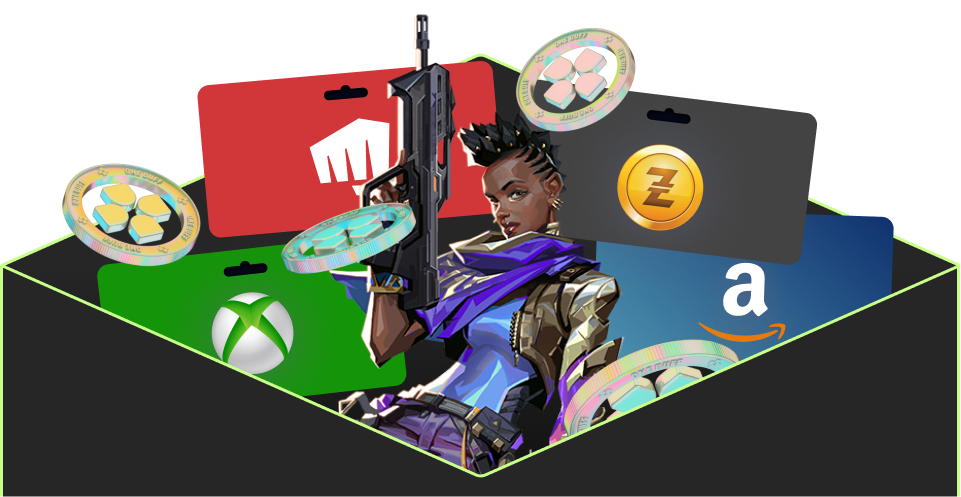Valorant Competitive Mode: How Does It Work?
Updated July 25, 2023.

Valorant is one of the most popular competitive shooters at the moment. In 2022, there was an average of 22 million monthly players, with a massive percentage of those players grinding ranked matches. Because the ranked portion of Valorant is so popular, Riot focuses a lot of its attention on making sure the game runs perfectly so that the experience is always flawless—and a reliable shooter is the best kind of competitive shooter.
Ranked matches in Valorant—or any game, really—are no walk in the park, and it takes a lot of skill and grinding to climb up the ranks. So, why play ranked? Before we answer that, let's break down what Valorant's competitive mode is and how it works.
What Is Valorant’s Competitive Mode?
As the name of the mode suggests, it includes competitive features for players who are there to prove themselves against other players of similar skill and ultimately get better at the game. It is a great way to put a name or rank to your skill level and requires patience, perseverance, and practice.
The gameplay rules are similar to those of unrated games, though the stakes are higher—wins and losses permanently affect your rank, which is visible to your party, the tab menu, and end-game scoreboard summaries.
» Read some expert tips on how to improve your Fracture map strategy in Valorant
Ranking System Explained
Ranks in Valorant are used to most accurately describe your skill level and place you against similarly skilled opponents in the competitive matches. Those ranks can also act as bragging rights when you've achieved a higher rank than your friends, but you'll still have harder games than them.
Before you dive into some Ranked games, you'll need to unlock Competitive mode. There are 2 different prerequisites to unlocking Competitive mode depending on when you started playing the game, and once you've unlocked the mode, there are a few things you'll have to keep in mind if you're aiming to get a rank by the end of that Episode.
In Episode 4 Act 1, Riot made a few changes that can be summed up in 5 steps:
1. Unlock Ranked
If you've created an account during or after Episode 4 Act 1 (that started in January 2022), you'll need to get your account to reach level 20 by playing spike rushes, deathmatches, and unrated matches for XP.
If, however, you've made an account before 2022, and you've played at least one ranked match before reaching level 20, you'll be allowed to continue playing ranked even if you're below level 20. However, if it's an old account but you've never played ranked before, the level 20 rule applies.
2. Play 5 Placement Matches
Once you have access to the Competitive mode, you'll have to play 5 matches to determine your initial rank. These matches are vital to getting a good placement at the start of the Act.
Valorant uses a system called MMR, which is what determines your skill level against other players. In these first 5 placement matches (especially if they're your first), your MMR will be extremely flexible. This means that you'll both earn and lose a lot of MMR. Depending on what your MMR is by the end of your 5th game, you'll receive the rank that the system thinks suits your level of skill.
3. Play Ranked and Climb
Now that you've got a rank, it's time to work on improving it. From the lowest rank to the highest, there are 9 ranks you'll need to grind through by winning games: • Iron 1, 2, and 3 • Bronze 1, 2, and 3 • Silver 1, 2, and 3 • Gold 1, 2, and 3 • Platinum 1, 2, and 3 • Diamond 1, 2, and 3 • Ascendant 1, 2, and 3 • Immortal 1, 2, and 3 • Radiant—the top 500 Valorant players in your region.
4. Brace Yourself for the End of the Act
Valorant has extended seasons called Episodes, which are split into 3 Acts, each about 2-3 months long. When you're playing ranked, your wins and losses will only count toward the rank you receive for that Act. When the Act is over, your rank will reset, and you'll have to play another 5 placement matches at the beginning of the following Act.
This is great if you placed low and you'd like a good shot at placing higher during the next Act. However, it's not so good if you're at a really high rank and risk placing much lower at the start of the next season.
5. Receive Rewards
Since there are 3 Acts in an Episode, there are 3 opportunities during that Episode for you to get different ranks. Your previous rank does influence your next placement, but because the MMR is so flexible, it could go either way—you could place much lower, much higher, or even right where you already were (which is likely and better for skill level MMR for everybody.)
At the end of the Episode, you'll receive rewards based on the highest rank you achieved during the end of the 3 separate Acts within the Episode.
» Read our guide on how to earn free Valorant points
Why You Should Care About the Competitive Mode
Other than bragging rights, Competitive mode not only lets you get some sweet rewards by the end of the Episode but is also the best-balanced game mode of them all, since everyone there has their own ranked MMR and they want to keep it that way or improve it.
So why aren't Casual modes balanced? Well, you might already know that Casual game modes can be riddled with complete noobs to pros who'll crush you to the point that you'll think they're hacking. That's because the MMR for Casual and Ranked are separate. A pro who plays ranked all day and is sitting in immortal rank might play the odd casual game here and there—and get paired up with players at the silver/gold level, which isn't fun or productive for either side.
Playing ranked games makes sure that you are paired with people who are at your level, so you're always playing fair games.
Another reason you should care about Competitive mode is that your rank is an indication of your skill level, and it can help you improve.
» Learn the differences between Valorant Points and Radianite Points
Key Takeaway
Competitive mode is filled with sweat-lords who are trying their best to improve and win games, which means that in all likeliness, you'll have a team comprised of the same try-hard nature, even if they're all random players. This might seem daunting at first, but this no-messing-about environment is the ultimate way to improve your mechanics, rotations, positioning, and communication in the world of Valorant.
If you're grinding through your ranks, or even sticking to the casual side of the game, try running Buff in the background for some free rewards!





